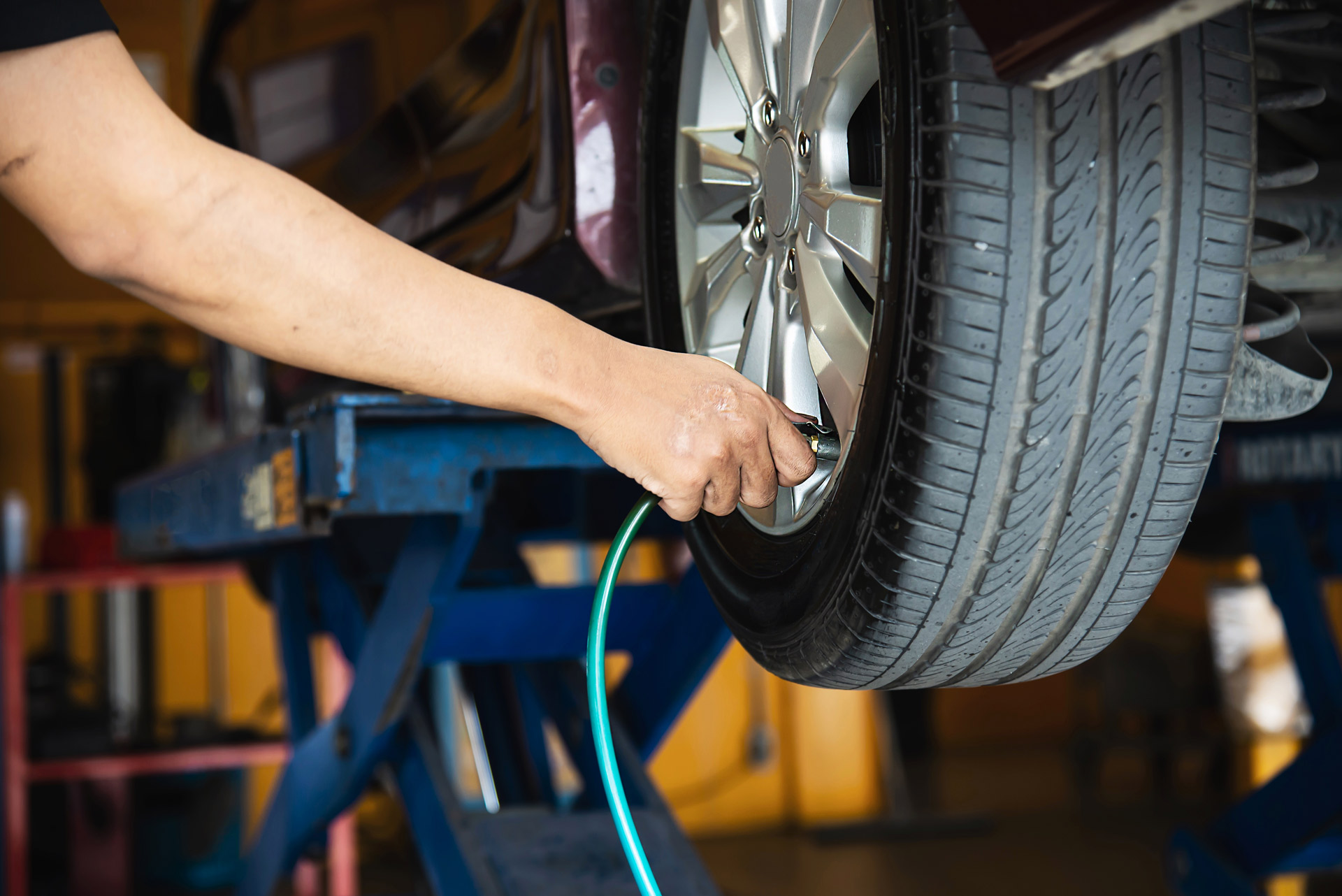

Most modern vehicles have a tire pressure monitoring system (TPMS) that analyzes tire pressure and alerts drivers to underinflated tires. These systems have been standard on Ford Explorers since their fourth edition in 2006 and can trigger a tire pressure sensor fault for various reasons. Uncovering the root cause of these alerts—and the corresponding repair solutions—can prove challenging without the proper equipment or technical knowledge.
This guide explores the common causes of Ford Explorer tire pressure sensor faults to help diagnose the underlying issue efficiently and accurately. Below, discover the corresponding repairs necessary to resolve these concerns and preventative measures that keep future tire pressure sensor faults at bay. Leverage Identifix Direct-Hit’s extensive database of vehicle-specific repair solutions to address these TPMS-related issues efficiently, ensuring optimal vehicle performance and superior customer satisfaction.
Tires can naturally lose air over time, but the amount of air lost is minimal compared to the dip in pressure required to illuminate a tire pressure sensor fault. Functional tire pressure monitoring systems are designed to alert drivers if tire pressures fall below 25% of the manufacturer’s recommended pressure rating, which is typically measured on a cold tire (one that hasn’t been driven on). Ford lists these ratings on the driver’s door jamb and calibrates its branded TPMS sensors to those cold-tire pressures automatically.
Replacing a road wheel with the spare tire can also trigger a tire pressure sensor fault if the spare tire doesn’t have its own TPMS sensor. Additional changes in the wheels or tires typically mounted on the Ford Explorer can also cause a similar fault, such as in the following scenarios:
Fluctuating ambient temperatures can alter tire pressures. As the temperature decreases, the air inside the tire contracts, lowering the pressure inside. Tire pressure sensor faults can also stem from a breach in the tire sidewall or tread caused by a puncture, slash, blowout, or damage sustained after hitting a curb or pothole.
You may also encounter electrical gremlins that can interfere with the communication between two critical elements in the direct TPMS installed on most Ford Explorers: the tire pressure control module and the tire pressure sensor. Within this direct system, the tire pressure control module consistently receives pressure measurements from the respective TPMS sensors. Any break in that communication triggers a tire pressure sensor fault.
Diagnosing and repairing a tire pressure sensor fault could be as simple as inflating the tire to the appropriate pressure. However, the repair solution could also be complex enough to require a thorough diagnosis. In either case, continuing to drive while your TPMS light is illuminated can result in premature tire wear, decreased fuel economy, and the potential for a tire blowout—which is never good, especially at higher speeds.
If the tire pressure sensor fault is more serious than just low tire pressure, repairs typically include resetting, retraining, or replacing the TPMS sensor and/or tire pressure control module. Yet, identifying the appropriate repair solution requires careful diagnosis to ensure the underlying issue is resolved. Begin by establishing if there is a reliable connection between the TPMS sensors and the tire pressure control module.
If these two components lose communication, a TPMS reset tool may be necessary to reboot the sensor and reestablish the link. Should the reset fail, verify the existence of the TPMS sensor by removing the tire. The sensor will either be attached to the inner part of the valve stem that sits inside the wheel or to the inner part of the wheel itself via a metal strap; if one isn’t attached, install a new sensor.
Existing TPMS sensors may or may not exhibit physical damage if they’re inoperable or the battery is failing or dead. Most tire pressure sensor batteries last between five and 10 years, and since the batteries are sealed, you must replace the entire sensor if the battery dies. However, if the TPMS sensor is installed and working, the tire pressure control module could be the culprit.
Once you’ve repaired or replaced the appropriate components, reset the TPMS by driving at cruising speed for 10–15 minutes. The dashboard light should go off, indicating that the system has returned to normal. Some Ford Explorer models may also have a physical TPMS reset button located near the bottom of the steering wheel.
A tire pressure monitoring system’s purpose lies in warning drivers of dangerous conditions, not reminding them to check their vehicle’s tire pressures. Routine cold-tire pressure checks—monthly for the average driver or more frequently for those who drive longer distances—ensure a Ford Explorer has adequate tire pressure for optimal performance. Storing a tire pressure gauge and portable air compressor in the Explorer also enables drivers to measure and top off their tire pressures should a sensor indicate underinflation.
Identifix simplifies the diagnosis and repair of tire pressure sensor faults on Ford Explorers of various model years. With over 3 million confirmed fixes, expanded OEM manual coverage, and access to a virtual technician hotline for complex repairs, Identifix Direct-Hit enables you to identify and resolve tire pressure sensor-related issues easily. Contact us to learn more about how Identifix Direct-Hit can help you streamline auto repair processes, benefiting your customers and your bottom line.
Did you like this article? Find more great content at identifx.com/blogs and solera.com/blog

Identifix is the leading provider of automotive repair shop solutions and sevices designed to improve shop profitability and repair outcomes.
"*" indicates required fields